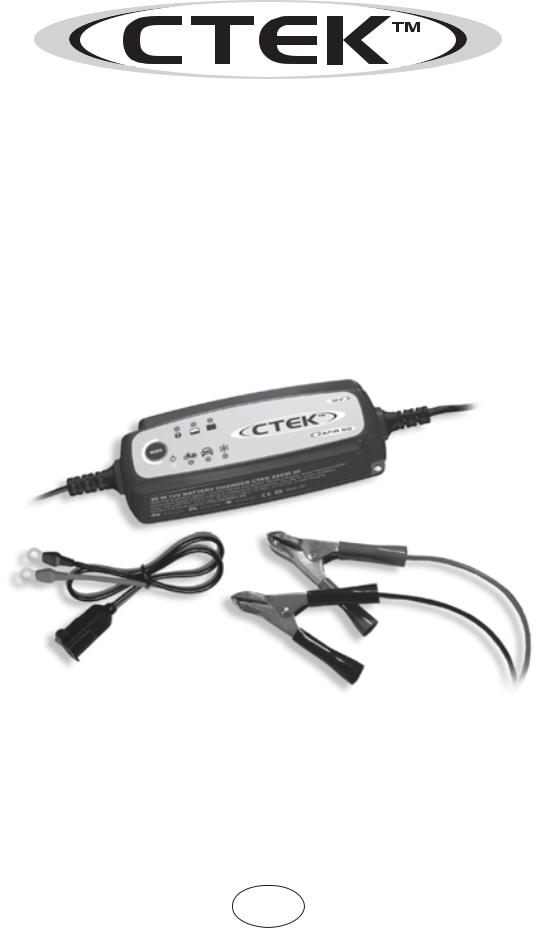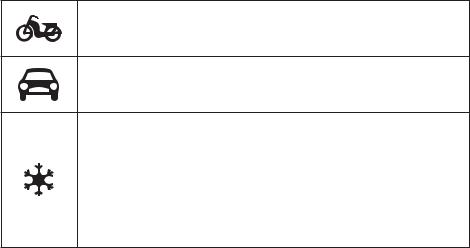CTEK ZAFIR 90 User Manual

ZAFIR 90
Battery charger
For lead-acid batteries 1,2-90Ah
User’s Manual and a guide to professional battery charging For Starter/Deep Cycle batteries
GB
INTRODUCTION
Congratulations on your purchase of your new professional ZAFIR 90 Switch Mode Charger with Pulse Maintenance. ZAFIR 90 is a member of a family of professional chargers from CTEK Sweden AB. It represents the state-of-the-art technology for battery charging. A ZAFIR 90 will prolong the lifetime of your battery. Read this user manual and follow the instructions carefully before using the charger.
SAFETY
•The charger is designed for lead-acid batteries from 1,2-90Ah. Do not use the charger for any other purpose.
•Use safety glasses and turn your head away when connecting or disconnecting a battery.
•Battery acid is corosive. Rinse immediately with water if acid comes into contact with skin or eyes. Seek medical advice.
•Make sure that the cable is not being pinched or in contact with warm surfaces or sharp edges.
•While charging, a battery can emit explosive gases, so it is important to avoid sparks in the immediate area.
•Always provide for proper ventilation during charging.
•Avoid covering the charger.
•Make sure that the electrical cable does not come into contact with water.
•Never charge a frozen battery.
•Never charge a damaged battery.
•Do not place the charger on the battery while charging.
•The electrical connection must fulfil the national heavy current requirements.
•Check the cabling in the charger before use. Make sure there are no cracks in the cabling or in the protective covering. A charger with damaged cables may not be used.
•Always check that the charger has gone over to maintenance charging mode before leaving the charger unattended and connected for long periods. If the charger had not gone over
to maintenance charging within 3 days, this is an indication of a problem. In this case the charger must be disconnected manually.
•All batteries fail sooner or later. A battery that fails during charging is normally taken care of by the chargers advanced control, but certain uncommon errors in the battery can still arise. Don’t leave the battery charger unattended for a longer period of time.
•Only mount the charger on a flat surface.
•This equipment may not be used by children or by those who can not read and understand the manual if they are not supervised by a responsible person who can guarantee that the battery charger is being used in a safe manner. Store and use the battery charger out of the reach of children. Make sure that children do not play with the battery charger.

BATTERY TYPES AND SETTINGS
ZAFIR 90 can easily be configured to charge many different types of 12V lead-acid batteries; wet batteries, MF, AGM och for most GEL-batteries.
The following recommendations should, however, only be seen as guidelines. When in doubt, always consult the battery manufacturer for further instructions.
Settings are made by pressing the “MODE-button” and stepping forward by pressing the button one step at a time, releasing the button when the required mode is reached.
Mode 14.4V/0.5A
This mode is normally used for <14Ah batteries.
Mode 14.4V/3.3A
Normal setting for wet batteries, MF and for most GEL batteries.
Mode 14.7V/3.3A
This setting is recommended for batteries at temperatures below 5°C. It is also recommended for many AGM batteries. This setting is not recommended for maintenance charging when the temperature at times exceeds +5°C. In this case, the 14.4V/3.3A mode is recommended.
CHARGING
Charging batteries mounted in a vehicle:
1.The power cord should be disconnected before connecting or disconnecting the battery leads.
2.Identify the pole that is grounded (attached to the chassis). Ground is normally connected to the negative terminal.
3.Charging a negatively grounded battery. Connect the red wire to the positive pole of the battery and the black cable to the vehicle’s chassis. Be careful not to connect the black cable in the vicinity of a fuel pipe or the battery.
4.Charging a positively grounded battery. Connect the black wire to the negative pole of the battery and the red cable to the vehicle's chassis. Be careful not to connect the red cable in the vicinity of a fuel pipe or the battery.
Charging of a battery not connected to a vehicle:
1.The power cord should be disconnected before connecting or disconnecting the battery leads.
2.Connect the red wire to the positive pole of the battery and the black cable to the negative pole.
